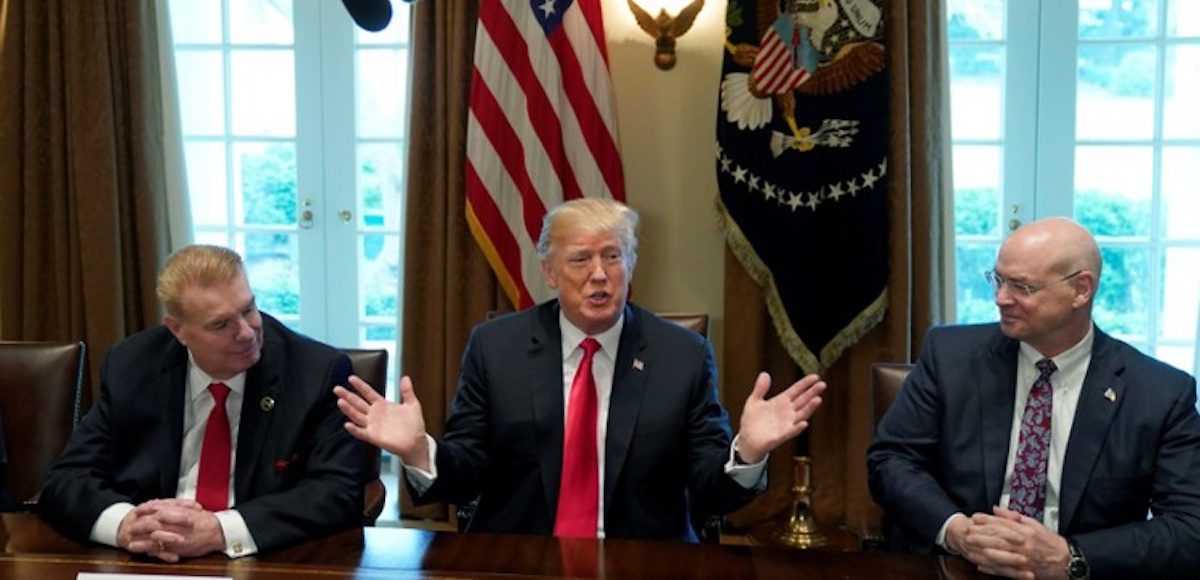
There’s an ongoing debate about Trump’s endgame on trade. Is he simply a crude protectionist, or is he disrupting the status quo in order to force other nations to reduce their protectionist barriers?
I hope it’s the latter, though I fear it’s the former.
But one thing I can state with certainty is that the President misreads early American history. Here’s a tweet that he recently sent about how America became a strong and rich country during an era when the federal government relied on tariffs to generate revenue.
Our Country was built on Tariffs, and Tariffs are now leading us to great new Trade Deals – as opposed to the horrible and unfair Trade Deals that I inherited as your President. Other Countries should not be allowed to come in and steal the wealth of our great U.S.A. No longer!
— Donald J. Trump (@realDonaldTrump) August 15, 2018
Trump is partially right. The United States became a rich country in the 1800s when tariffs were a primary source of revenue.
But I have argued that America became rich because of other policies.
- The federal government was very small, with the budget consuming on average less than 3 percent of the economy’s output.
- Prior to that awful day in 1913, there was no income tax, no payroll tax, no capital gains tax, no death tax, and no corporate tax.
- There was no sprawling and intrusive administrative state imposing costly regulations that hinder the private sector.
No, the United States was not a laissez-faire paradise in the 1800s. I’m simply making the case that the economy had more than enough “breathing room” to generate ever-higher levels of national prosperity.
Meaning the economy grew, not because of tariffs, but because other bad policies didn’t exist.
And I’m not the only with this perspective. Eric Boehm’s article in Reasonconcludes with an offer to trade the income tax for a modest tariff.
After the ratification of the Constitution, the very first law passed by the new Congress was the Tariff Act of 1789. It imposed an 8 percent tax on pretty much all imports into the United States, with the revenue from the tariffs used to fund the new national government and to pay down debts
accumulated during the Revolutionary War. …those early tariffs did solve a very practical revenue problem for the early United States government. In those days before H&R Block (indeed, before income taxes) collecting taxes was a difficult prospect. It was much easier to post-up customs officials at every port and collect taxes on the physical stuff that came ashore than to send tax collectors to every town and borough across 13 states to collect taxes from the populace—especially since many of those would-be taxpayers weren’t entirely sold on the idea of a powerful central government, and had a recent history of armed rebellion against excessive taxation. …If Trump wants to make the argument that America should use tariffs to raise revenue, like we did in the 1790s, he better have a plan to abolish all federal taxes on income, investments, and labor. If he wants to have that discussion, well, I’ll listen.
Brian Domitrovic, writing for Forbes, hits the nail on the head. He starts by agreeing with Trump’s assertion about strong growth in the era of tariffs.
…there is a general sense, among the American public, that previously in history, when the American economy really grew at great rates in the
extensive stretch of time before the era of free-trade ideology after 1945, we had tariffs. Tariffs and American prosperity went together. Why not try to get that mix again? …This country’s economy regularly grew at rates double ours today, when the tariff was in force from 1789 until early in the 20th century.
But he points out that other factors deserve the credit. Especially the absence of any type of taxation on income.
…there was a condition that obtained in these years that is absent today. That condition is that the tariff was in the main the only form of federal taxation. There was no income or profits tax, no wage tax, no tax on investment gains… When the American economy really boomed under the tariff, over the first half of our history, financiers and entrepreneurs plowed money, energy, and ideas into businesses knowing that all receipts were available to recover costs and make a profit. …A company’s pay rates did not have to exceed the wage needs of the employees so as to cover their income and payroll tax obligations, as today. The money left to a company from sales after costs faced no corporate tax. And there was no inheritance tax.
And I’ll add one additional point. One of the good things about tariffs is that they are inherently self-limiting because of the Laffer Curve. As Alexander Hamilton pointed out, the government gets less revenue if trade taxes get too high.
Anyhow, the moral of today’s story is that tariffs are bad,  but they are less bad than the modern welfare/administrative state.
but they are less bad than the modern welfare/administrative state.
But here’s the challenge.
If we want to solve the problems caused by the western world’s second-most-depressing chart, we’ll need to figure out how to reverse all the bad policies that produced the western world’s most-depressing chart.
Unfortunately, Trump has been making government even bigger, so the likelihood of returning to a tariff-only tax system has dropped from 0.00005 percent to 0.00001 percent.





